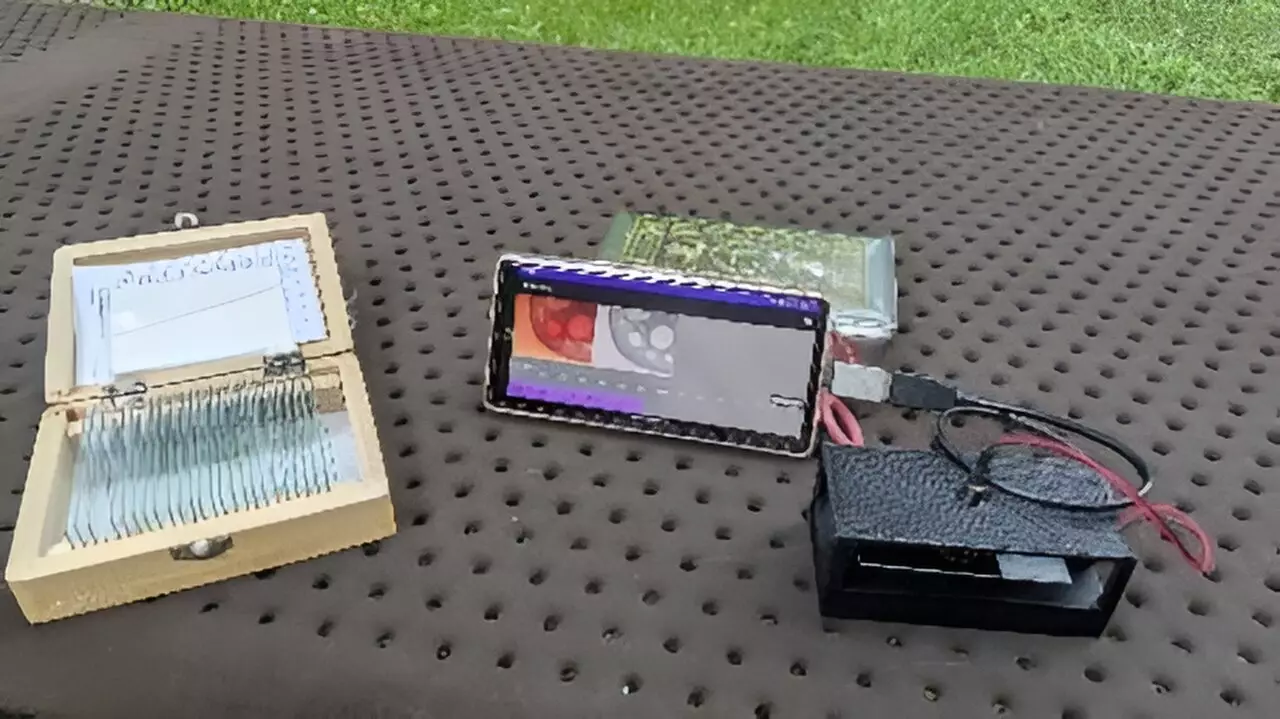Advancements in technology have consistently led to groundbreaking innovations in the field of microscopy. One of the latest developments is the smartphone-based digital holographic microscope, a tool that has the potential to democratize access to high-precision 3D imaging. This remarkable instrument, which is both lightweight and cost-effective, signifies a significant step forward in scientific research, education, and medical diagnostics, especially for users in resource-limited environments.
Traditional digital holographic microscopes have long suffered from the dependence on complex optical systems and external computing devices, making them challenging to transport or deploy in a variety of settings. However, researchers from the Tokyo University of Agriculture and Technology, led by Yuki Nagahama, have devised a novel approach that harnesses the computational power of modern smartphones alongside a simplified optical system produced through 3D printing. This holistic integration not only enhances functionality but also widens accessibility for various applications.
At its core, a digital holographic microscope operates by capturing interference patterns produced when light waves encounter a specimen. The hologram generated from this interaction contains rich 3D information about the sample, including surface features and internal structures. Traditionally, the reconstruction of these holograms required extensive computational resources, typically necessitating a separate computer, which often restricted real-time analysis and portability.
In an innovative twist, the team behind the smartphone-based holographic microscope has implemented a method called band-limited double-step Fresnel diffraction. This approach minimizes data points by leveraging the performance capabilities of smartphones to perform rapid reconstruction of holographic images. Such advancements allow for the swift analysis of samples, marking a notable departure from earlier methodologies that were slower and less efficient.
One of the most significant advantages of this new digital holographic microscope is its portability. The lightweight optical housing created via 3D printing allows easy transportation and use in various field conditions. As such, it becomes a practical tool not just for laboratory settings but also for on-site applications, including educational settings where students can engage with live organisms without the need for bulky equipment.
Nagahama underscores the microscope’s vast potential, noting it could serve critical roles in medical diagnostics, particularly for diseases like sickle cell anemia in developing countries. The ability to conduct precise 3D measurements of blood samples directly at point-of-care locations could revolutionize how healthcare is administered in areas with limited resources.
An essential feature of this smartphone-based microscope is its capacity for real-time holographic image reconstruction. The application developed for Android devices enables users to seamlessly interact with the holographic images displayed on their smartphone screens, utilizing pinch gestures to explore the structures in greater detail. This hands-on interaction fosters an engaging experience for users, particularly in educational contexts where live demonstrations can enhance learning opportunities.
The researchers have validated the microscope’s efficacy, achieving accurate reconstructions on test targets and showcasing its versatility by imaging various samples, such as the cross-section of a pine needle. A notable highlight of their findings is the capability of achieving a frame rate of nearly two frames per second, which is significant for real-time observation of stationary subjects. Nonetheless, there is an ongoing pursuit to push these boundaries further.
Despite these remarkable advances, challenges remain in refining the quality of images produced by the microscope. Previous digital holographic systems have suffered from the generation of unwanted secondary images during reconstruction, a challenge that researchers are keen to address. Future iterations of the smartphone-based microscope are set to explore the application of deep learning techniques aimed at enhancing the quality of imaging while reducing artifacts.
The development of the smartphone-based digital holographic microscope heralds a new era in microscopy that could transform various fields, including education and healthcare. By simplifying design and enabling real-time analysis, this technology paves the way for broader use and increased accessibility. As researchers continue to refine this system, its implications for practical applications may prove to be extensive, further integrating advanced optical technologies into everyday use for people around the world.


Leave a Reply